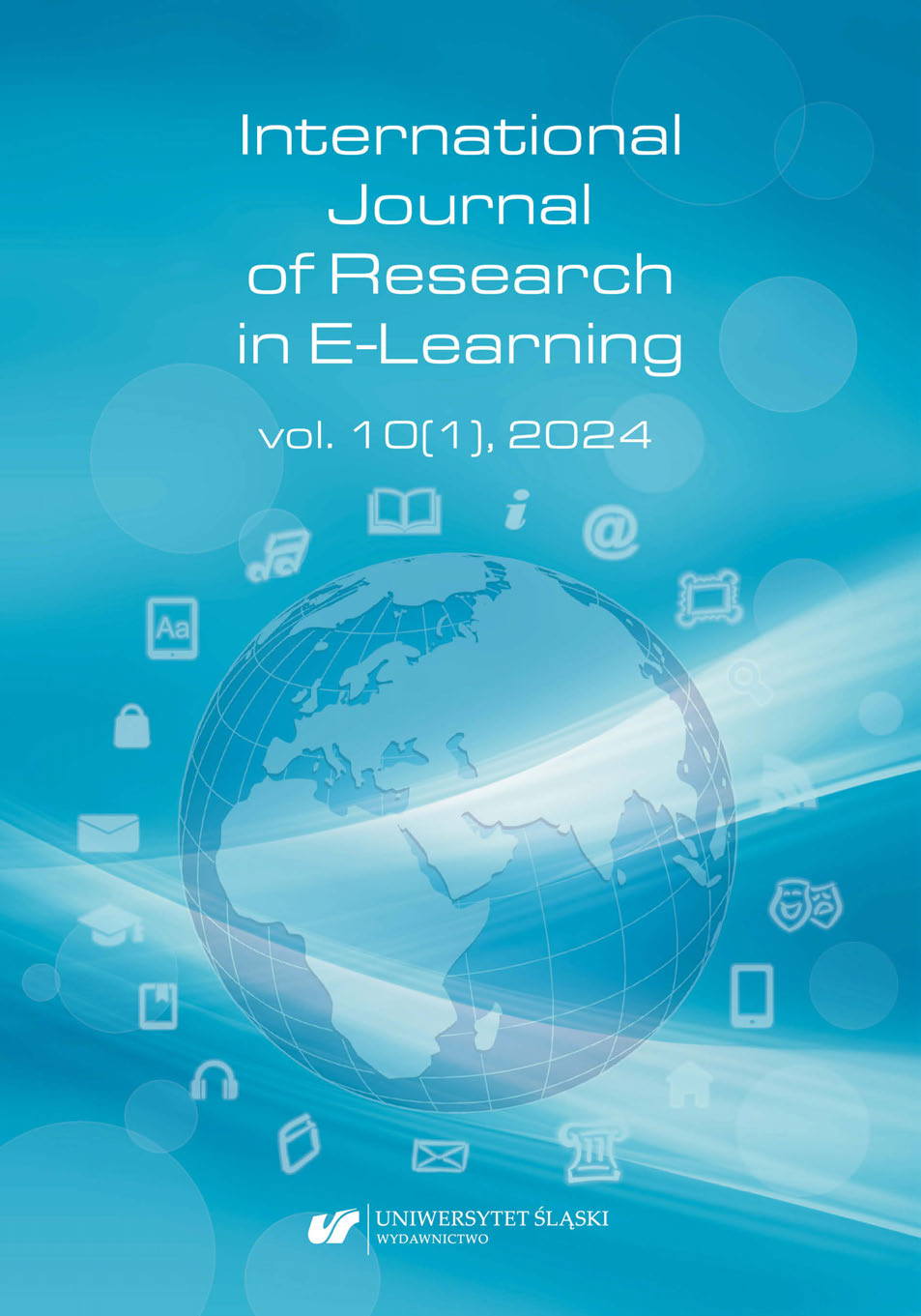Alawi, F. (2023). Artificial intelligence: The future might already be here. Oral Surgery Oral Medicine Oral Pathology Oral Radiology, 135(3), 313–315. https://doi.org/10.1016/j.oooo.2023.01.002.
Google Scholar
Chiu, T. K. F., Meng, H., Chai, C. S., King, I., Wong, S., & Yeung, Y. (2022). Creation and evaluation of a pre-tertiary Artificial Intelligence (AI) curriculum. IEEE Transactions on Education, 65(1), 30–39. https://doi.org/10.1109/TE.2021.3085878.
Google Scholar
Deng, X. & Yu, Z. (2023). A Meta-Analysis and Systematic Review of the Effect of Chatbot Technology Use in Sustainable Education. Sustainability 2023, 15, 2940. https://doi.org/10.3390/su15042940.
Google Scholar
Garov, K., Papancheva, R., Aneva, S., Glushkova, T., et al. (2022). Computer Modeling and IT, 6th grade [Computerno modelirane i informacionni tehnologii za 6 klas], 128 p., publ. Klett. ISBN 9786197669039.
Google Scholar
Glushkova, T. (2015). Personalization and user modeling in adaptive e-learning systems for schools. In Boyka Gradinarova (Ed.) E-Learning – Instructional Design, Organizational Strategy and Management (pp. 127–147). InTech. ISBN 9789535121886, https://doi.org/10.5772/61084, ISBN 978-953-51-2188-6.
Google Scholar
FACILITATE-AI (2023). AI Teaching Guide for teachers facilitating the learning of students in grade 7–12. https://facilitate-ai.eu/, accessed on 10.10.2023.
Google Scholar
Krasteva, I. & Glushkova, T. (2022) Blockchain based services in school educational space, In E. Smyrnova-Trybulska (ed.) E-learning in the Transformation of Education in Digital Society. “E-learning” Series. Vol. 14, Katowice–Cieszyn: STUDIO NOA for University of Silesia (pp. 205–214). ISSN 2451-3644 (print edition), ISSN 2451-3652 (digital edition), ISBN 978-83-66055-31-5, https://doi.org/10.34916/el.2022.14.15.
Google Scholar
McCarthy, J. (1987). Generality in artificial intelligence. Communications of the ACM, 30(12), 1030–1035. ISSN 0001-0782.
Google Scholar
Nielsen, L., Nielsen, K. S., Stage, J., & Billestrup, J. (2013). Going Global with Personas. In: Kotzé, P., Marsden, G., Lindgaard, G., Wesson, J., & Winckler, M. (Eds.) Human-Computer Interaction – INTERACT 2013. Lecture Notes in Computer Science, vol. 8120. Springer, Berlin, Heidelberg. https://doi.org/10.1007/978-3-642-40498-6_27, Print ISBN 978-3-642-40497-9, Online ISBN 978-3-642-40498-6.
Google Scholar
Noskova T., Smyrnova Trybulska E., Morze, N., Hug T., Glushkova T., & Gurba K. (2021). New Technologies in Personalization of STEM and STEAM Education – International Context. International Journal of Continuing Engineering Education and Life-Long Learning, 1(1). https://doi.org/10.1504/ijceell.2022.10037158, ISBN 1741-5055.
Google Scholar
Ouyang, F. & Jiao, P. (2021). Artificial intelligence in education: The three paradigms. Computers & Education: Artificial Intelligence, 2, 100020. https://doi.org/10.1016/j.caeai.2021.100020.
Google Scholar
Puryear, B. & Sprint, G. (2022). Github Copilot in the classroom: learning to code with AI assistance. Journal of Computing Sciences in Colleges, 38(1), 37–47. ISSN 1937-4771.
Google Scholar
Quibeldey-Cirkel, K. (2023). Disrupting stem education: the game-changing impact of ChatGPT and ChatGPT codex. Proceedings from the EDULEARN23 Conference (pp. 220–228), IATED. ISBN 978-84-09-52151-7, ISSN 2340-1117, https://doi.org/10.21125/edulearn.2023.0106.
Google Scholar
Rahman, M. M. & Watanobe, Y. (2023). ChatGPT for education and research: Opportunities, threats, and strategies. Applied Sciences, 13(9), 5783. https://doi.org/10.3390/app13095783.
Google Scholar
Rahnev, A., Pavlov, N., & Kyurkchiev, V. (2014) Distributed Platform for e-Learning – DisPeL. European International Journal of Science and Technology (EIJST), 3(1), 95–109. ISSN 2304-9693, Corpus ID: 111412863.
Google Scholar
Reis, A., Paulino, D., Paredes, H., Barroso, I., Monteiro, M. J., Rodrigues, V., & Barroso, J. (2018). Using intelligent personal assistants to assist the elderlies an evaluation of amazon Alexa, Google Assistant, Microsoft Cortana, and Apple Siri. Proceedings of 2nd international conference on technology and innovation in sports, health and wellbeing (TISHW) (pp. 1–5), IEEE. https://doi.org/10.1109/TISHW.2018.8559503.
Google Scholar
Sarker, I. H. (2022). AI-based modeling: Techniques, applications and research issues towards automation, intelligent and smart systems. SN Computer Science, 3(2), 158. ISSN 2661-8907, https://doi.org/10.1007/s42979-022-01043-x.
Google Scholar
Stoyanov, S., Glushkova, T., Tabakova-Komsalova, V., Stoyanova-Doycheva, A., Ivanova, V., & Doukovska, L. (2022), Integration of STEM centers in a Virtual Education Space, Mathematics 2022, 10, 744. https://doi.org/10.3390/math10050744, ISSN 2227-7390.
Google Scholar
Stoyanov, S., Glushkova, T., & Todorov, J (2019). Artificial Intelligence. Solve problems through search. [Izkustven intelekt. Reshavane na problemi posredstvom tarsene], Sofia: Publ. Izkustva. ISBN 9786197243871.
Google Scholar
Todorov, J., Popchev, I., & Radeva, I. (2019 a), Personal Assistant Architecture in Virtual Educational Space, Information Technologies and Control, 2, 2019, 20–26. https://doi.org/10.7546/itc-2019-0009.
Google Scholar
Todorov, J., Krasteva, I., Ivanova V., & Doychev, E. (2019 b). BLISS-A CPSS-like Application for Lifelong Learning, Proceedings of IEEE International Symposium on Innovations in Intelligent Systems and Applications (INISTA), Sofia, Bulgaria, 1–5. https://doi.org/10.1109/INISTA.2019.8778363, ISBN 978-1-7281-1862-8.
Google Scholar
Valkanov, V., Stoyanov, S., & Valkanova, V. (2016). Virtual Education Space. Journal of Communication and Computer, 13(2), 64–76. ISSN 1548-7709, https://doi.org/10.17265/1548-7709/2016.02.002.
Google Scholar


 https://doi.org/10.31261/IJREL.2024.10.1.01
https://doi.org/10.31261/IJREL.2024.10.1.01
